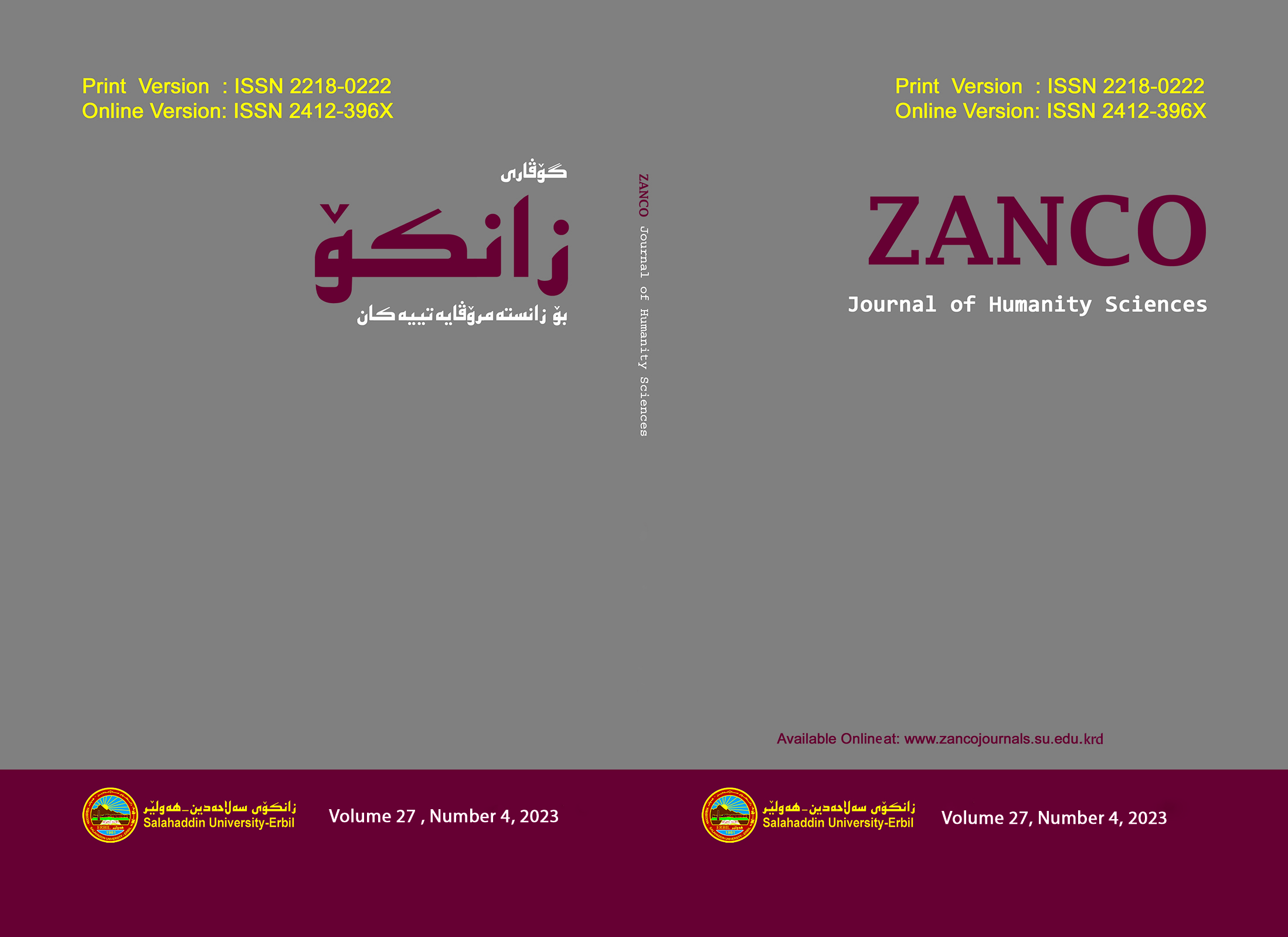Exploring EFL Students’ Perspectives on the Implementation of Content-Based Instruction for Improving English Language Skills in Entrepreneurship Education Module
DOI:
https://doi.org/10.21271/zjhs.27.4.16Keywords:
Content-Based Instruction, Entrepreneurship Education, Improving English Language Skills, EFL, Students’ PerspectivesAbstract
Content-Based Instruction is a type of instruction used to teach English language. This type of instruction is used to teach Entrepreneurship Education Module. Entrepreneurship Education module was added to English Language Department’s curriculum in the academic year 2016-2017. The aims of adding it were to equip students with entrepreneurial skills and build their entrepreneurial mindset to be ready for post-university life. The current study aims, first, to explore the students' beliefs about the effect of teaching Entrepreneurship Education in English on developing vocabulary and grammar as two main language areas. Second, it also attempts to find out the extent to which the students believe that Content-Based Instruction develops their language skills. Third, it shows the authenticity of the Entrepreneurship Education content and of its teachers’ provided examples by examining the participants’ perspectives.
The present study is descriptive in which the researchers utilized the quantitative approach. Moreover, they used a closed-ended, Five-Point Likert Scale student questionnaire which was analyzed through (SPSS version 26). The study sample was 59 EFL second-year students from English Language Department, College of Basic Education at Salahaddin University-Erbil in the academic year (2021-2022). Based on the study findings, incorporating Entrepreneurship Education module into English Language Department’s curriculum has positive impacts on students. From their perspectives, the students showed that they improved their speaking, reading, and writing skills. Furthermore, they also indicated improvement in their vocabulary as an important language area. Finally, the results also show that the content of the module is authentic.
References
Bang, Y. (2013). EFL College Students’ Perceptions toward Content-Based Learning. Modern English Education, 14(1), pp. 23-47.
Beckett, G., & Li, F. (2012). Content-Based English Education in China: Students’ Experiences and Perspectives. Journal of Contemporary Issues in Education, 7(1), pp. 47-63.
Brinton, D. M., & Snow, M. A. (2017). ‘The Evolving Architecture of Content-Based Instruction.’ In M. A. Snow & D. M. Brinton (Eds.), The Content-Based Classroom: New Perspectives on Integrating Language and Content. 2nd ed., pp. 2-20. Ann Arbor, MI: University of Michigan Press.
Brinton, D., Snow, M. & Wesche, M. (1989). Content-Based Second Language Instruction. Boston: Heinle and Heinle Publishers.
Bula, O., (2014). Content-Based Instruction: A Relevant Approach of Language Teaching. Innovaciones Educativas, 15(20), pp. 71-83.
Corrales, K., & Maloof, C. (2011). Student Perceptions on How Content-Based Instruction Supports Learner Development in a Foreign Language Context. Zona Próxima, 15(1), pp 40-53. DOI:10.14482/zp.15.398.17
Coyle, D., Hood, P., & Marsh, D. (2010). CLIL: Content and Language Integrated Learning. New York, NY: Cambridge University Press.
Dueñas, M. (2004). The Whats, Whys, Hows and Whos of Content-based Instruction in Second/Foreign Language Education. International Journal of English Studies, 4(1), pp. 73-96.
Howatt, A, P, R, (1984). A History of English Language Teaching. Oxford; Oxford University Press.
Krueger, M., & Ryan, F. (Eds.). (1993). Language and content: Discipline- and Content-based Approaches to Language Study. Lexington: Heath and Company.
Lambert, W. E., & Tucker, G. R. (1972). The Bilingual Education of Children: The St. Lambert Experiment. Rowley, MA: Newbury House.
Larsen-Freeman, D., & Anderson, M. (2011). Techniques & Principles in Language Teaching. (3rd ed.). New York: Oxford University Press.
Leaver, B. L, &Stryker, S. (1989). Content‐based Instruction for Foreign Language Classrooms. International Journal of English Studies, 22(3), pp. 269-275.
Miyasako, N. (2016). University Students' Perceptions of Content-Based Instruction on English Language Teaching and Their Relevance to the Students' L2 Motivational Self System: An Exploratory Study. JACET Journal, 60(1), pp 1-19.
Mohan, B. A. (1986). Language and Content. Reading, MA: Addison-Wesley.
Stoller F.L., & Fitzsimmons-Doolan S. (2017). ‘Content-Based Instruction.’ In: Van Deusen-Scholl N., May S. (eds) Second and Foreign Language Education. Encyclopedia of Language and Education (3rd ed.). Springer, Cham.
Yang, J., & Chen, W. (2015). Students’ Perspective of Using Content-Based Approach in ESP Class. English Language Teaching, 8(8), pp 1-18.
Downloads
Published
How to Cite
Issue
Section
License
Copyright (c) 2023 David Sami Toma, Tahsin Hussein Rassul

This work is licensed under a Creative Commons Attribution-NonCommercial-ShareAlike 4.0 International License.
Except where otherwise noted, content on this site is licenced
under a Creative Commons Attribution License 4.0 (CC BY- 4.0)










